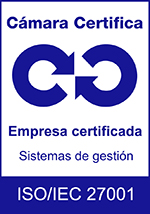Source: Enablon Insights. Translated by Laragon.
For organizations that participate in a selection process for the selection of EHS softwareWhile there is no doubt that a software system will help improve EHS management, it must also take into account personnel, processes, organizational culture and other aspects that influence performance.
Organizations should establish their EHS objectives before implementing an EHS software system. An important question you need to ask yourselves is the following:
“Should there be a centralized or decentralized approach to EHS management?”
Every industry is different and every organization is unique, so the answer to the question will vary. But here’s an answer that will probably apply to most global organizations: A balance is needed between centralization and decentralization. Going fully in one direction or the other is not ideal because there will be situations that will require some decentralization.
To illustrate the need for a balance between centralization and decentralization, let’s look at four examples for each approach.
Examples where centralization helps
-
Metrics tracking:
Each site, facility or business unit will track its own metrics and indicators, but these need to be in place so that key performance indicators can be tracked and reported at the corporate level, and communicated to relevant stakeholders. Centralizing EHS management makes it easier to measure EHS performance for the entire company.
-
Benchmarking sites:
Centralizing EHS management also makes it easier to benchmark individual sites for different metrics, and to see which ones the rest of the organization should learn from and which ones need improvement.
-
Sharing best practices:
When everyone is on the same platform and everyone sees exactly the same thing, it is easier to share information, including best practices from the best performing sites, which can be adopted by all other sites. This allows all sites to target the same performance standards.
-
Promote a uniform safety culture:
You want to ensure that everyone in the organization adheres to the same values and attitudes of your global safety culture, despite cultural and linguistic differences between locations. The centralization of EHS management facilitates the promotion of the same safety culture at all sites.
Examples where decentralization helps
-
Different business units:
This is especially applicable to global conglomerates. For example, a business unit that is in the oil and gas industry and one that manufactures household goods will have two very different types of needs. Some elements may be centralized (e.g., a common management system, a common information system, etc.), but both business units will also need to do some things autonomously because they are very different.
-
Cultural differences:
In any global organization, there will always be a need for commonality, such as a uniform global safety culture. But cultural and linguistic differences can be significant, so it is also necessary to give some degree of autonomy to individual sites to do things their own way, although the corporate objectives must be the same.
-
Mergers and acquisitions:
In this example, temporary decentralization can be good. Finally, all units of an organization must be on the same EHS program and adhere to the same EHS culture. But if a newly acquired unit has a mature EHS program and strong EHS performance, it is better to let them continue to do things their way for a while, and gradually transition their EHS program to the corporate program, rather than do it abruptly and risk damaging EHS performance. As they say, “If it ain’t broke, don’t fix it.” At least not right away.
-
Regulatory compliance:
This is a delicate matter. The idea is not that compliance should be decentralized, but that some level of decentralization may be necessary to allow local EHS managers or site managers who are more knowledgeable about local regulations, and may even be in contact with local authorities, to effectively comply with regulations in their own way, as long as they report compliance status to the rest of the organization and adhere to the overall EHS culture. The idea is to adopt a global vision, while taking advantage of local knowledge and experience.
The best way to achieve a balance between centralization and decentralization of EHS management is to recognize cases in which some level of decentralization makes senseand realize that there are different levels of decentralization, i.e., it is not an “all or nothing” proposition.




